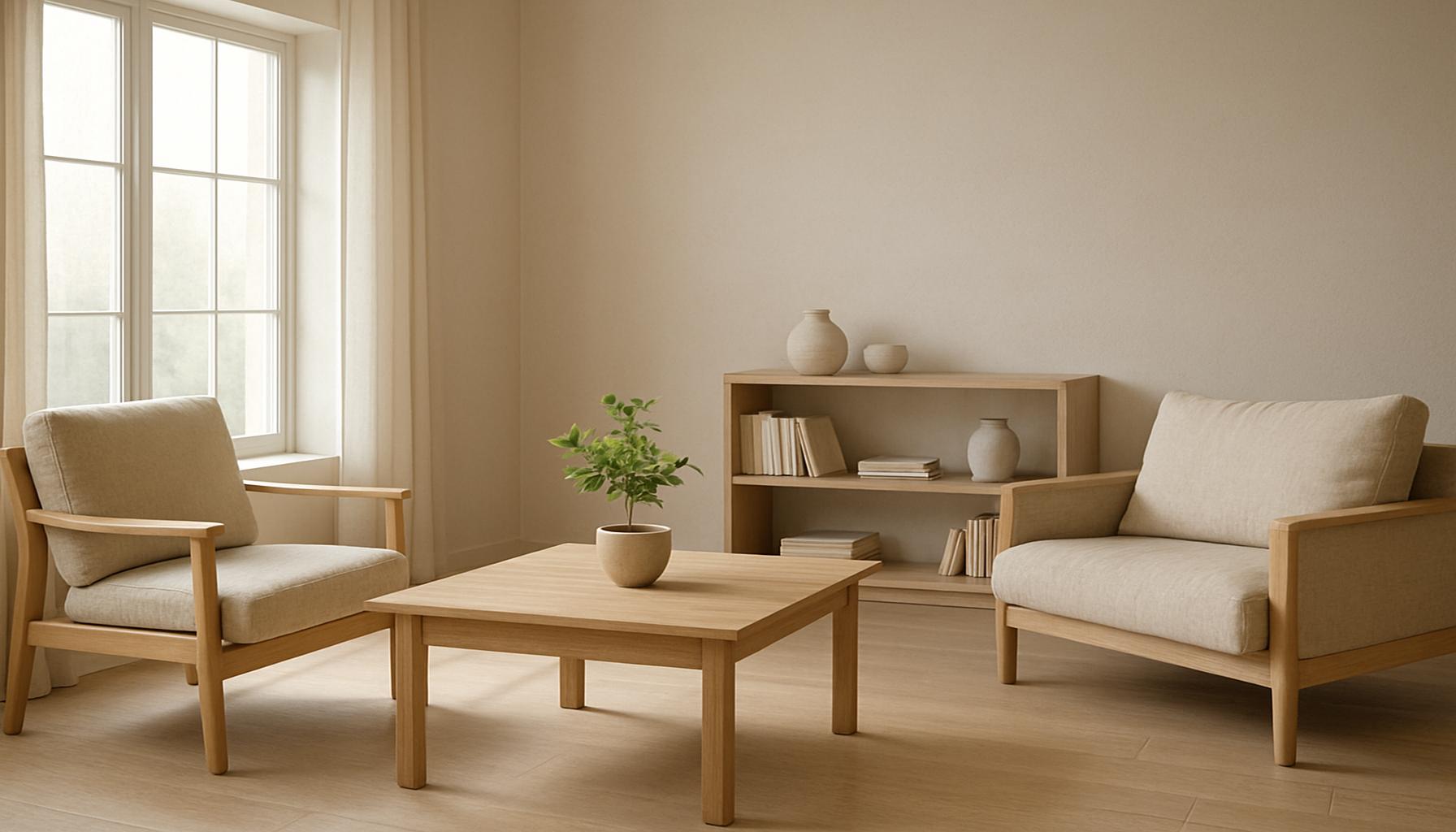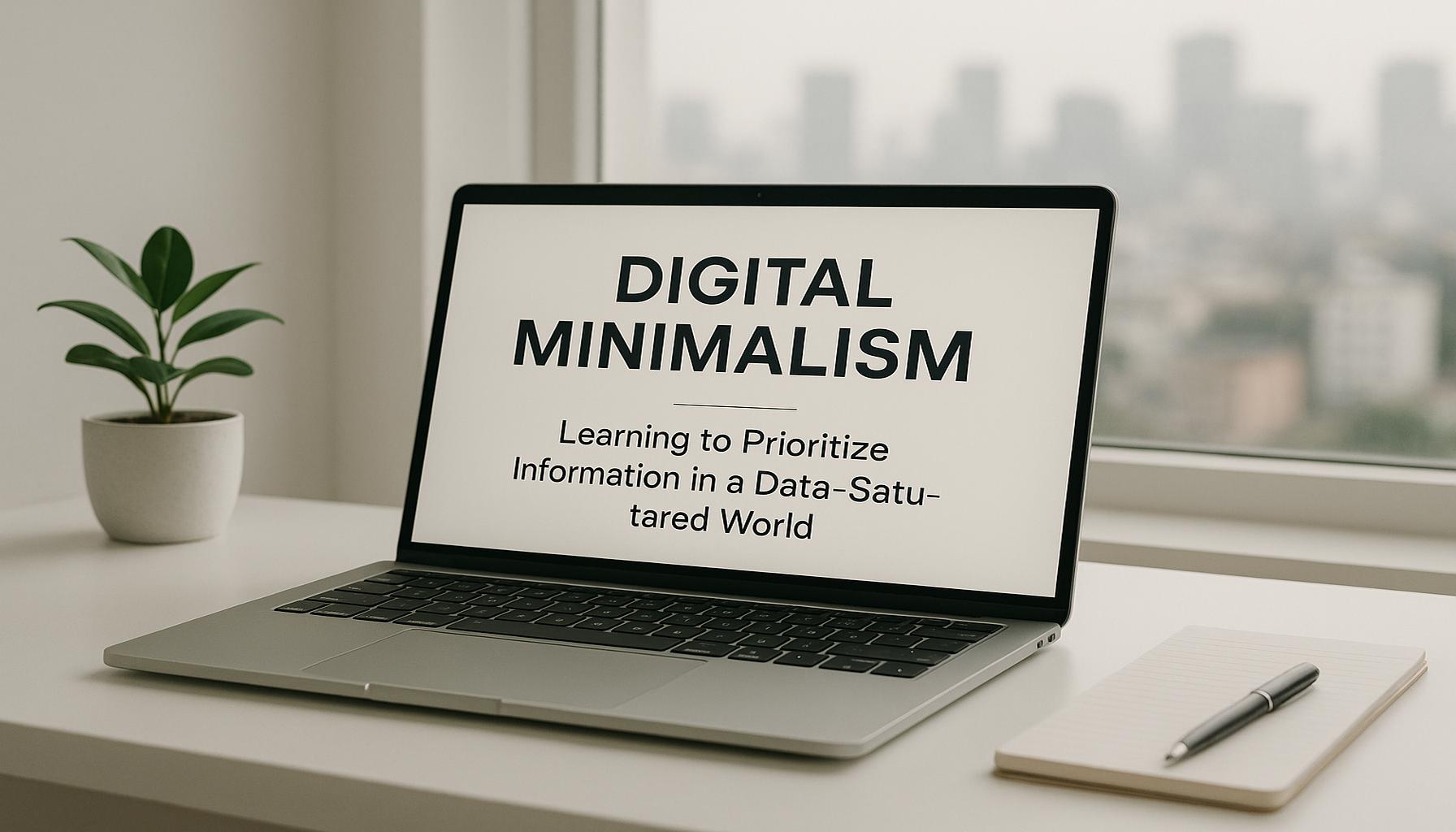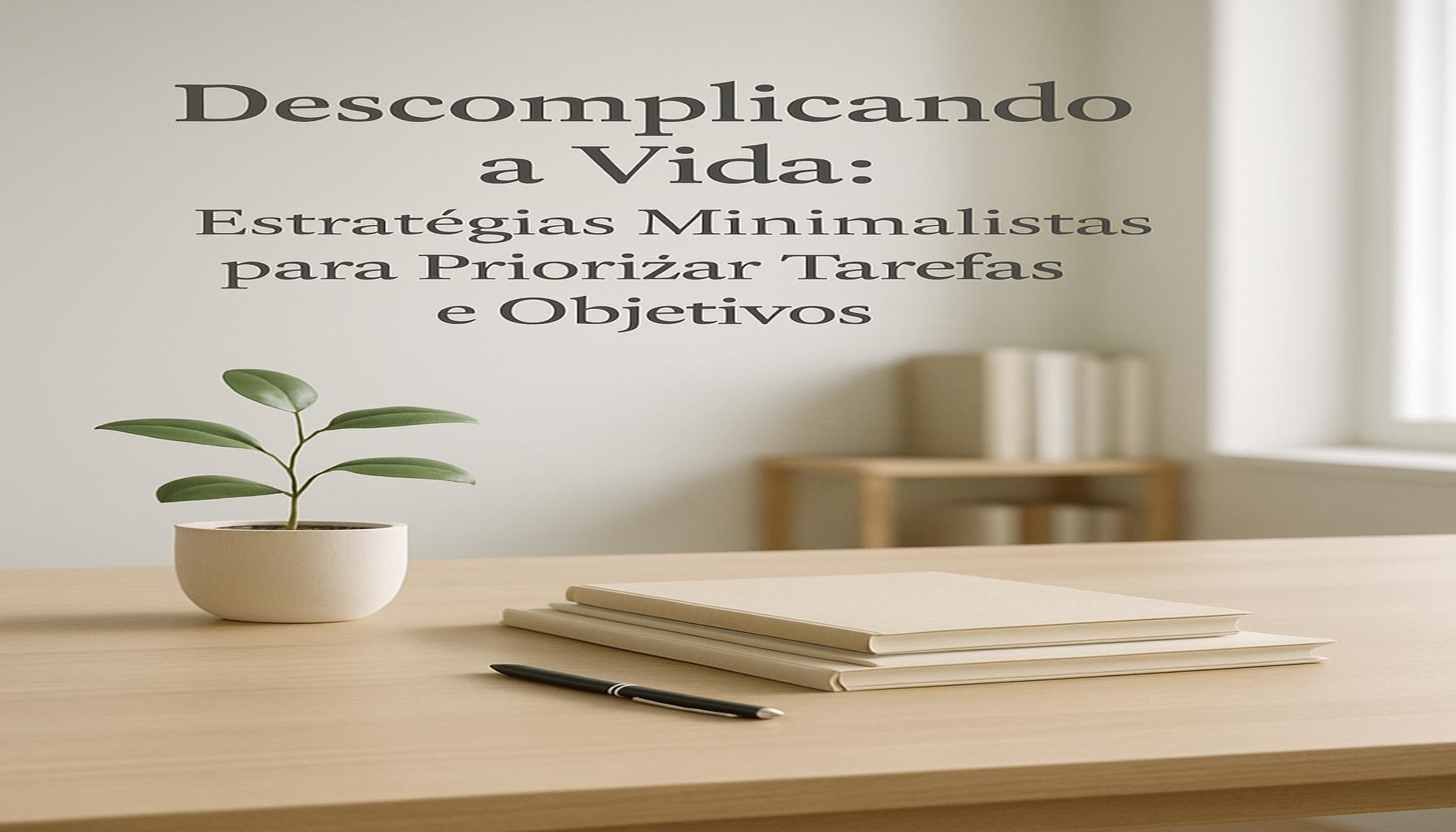The Art of Prioritization in Minimalist Living: How to Choose What Really Matters

Understanding the Importance of Prioritization
In a world brimming with distractions and endless choices, the art of prioritization emerges as a crucial skill for anyone embracing minimalist living. While the term “minimalism” often conjures images of clean spaces and simple aesthetics, its true essence extends far beyond physical decluttering. It’s about making thoughtful decisions that resonate with your core values and enhance your lifestyle.
Consider the overwhelming nature of modern life. With notifications pinging from smartphones, a never-ending to-do list, and a myriad of choices at our fingertips, it’s easy to feel lost. Therefore, refining your focus is not just beneficial; it is essential. When you prioritize, you create a roadmap that directs you toward what truly matters.
Identifying Core Values
One of the first steps in the prioritization process is to identify your core values. These are the guiding principles that shape your life decisions. For instance, if family is a central value, you might prioritize spending weekends with loved ones over attending social events that don’t align with this commitment. Similarly, if health is vital to you, activities that promote wellness, such as exercise or mindful eating, should take precedence. Reflecting on what beliefs resonate most deeply can illuminate the way you allocate your time and energy.
Assessing Daily Activities
Next, it’s crucial to assess your daily activities. Many individuals find themselves bombarded with tasks that do not enhance their well-being. Ask yourself: which activities genuinely contribute to your happiness? Keeping a daily log can provide insight into how much time is invested in tasks that may not serve you well. For example, spending several hours mindlessly scrolling through social media could be replaced with activities like reading, volunteering, or engaging in a hobby that brings joy and fulfillment.
Evaluating Possessions
The journey of prioritization also includes evaluating your possessions. Take a moment to consider whether your belongings are enhancing or detracting from your happiness. Marie Kondo’s popular method of decluttering emphasizes keeping only items that “spark joy.” This principle resonates with many who strive to live with less, advocating for quality over quantity. For instance, owning a few well-loved books or cherished pieces of art can offer far more satisfaction than a crowded shelf of items that hold little significance.

Many people grapple with the question of what really matters in their lives, often resulting in unnecessary stress and clutter. By intentionally prioritizing, you can reclaim control and nurture a fulfilling, simpler existence. Remember, this journey is not limited to decluttering your physical space; it also encompasses mental and emotional clarity, which is equally vital.
In the upcoming sections, we will explore practical strategies for prioritization that resonate with the principles of minimalist living. Join us as we unravel how to select what truly enriches your life, leading to a more satisfying and purpose-driven existence in an increasingly chaotic world.
DISCOVER MORE: Click here to learn about the psychological benefits of decluttering
Practical Strategies for Effective Prioritization
Embracing minimalist living requires an ongoing commitment to focus on what truly enhances your life. Once you have established your core values and assessed your daily activities and possessions, the next step is to implement practical strategies that will facilitate effective prioritization. These strategies not only help declutter your environment but also serve to clear mental clutter, enabling you to concentrate on essential tasks and values.
Creating a Priority Matrix
A great tool to aid prioritization is the priority matrix, a simple grid that helps you categorize tasks and commitments based on their urgency and importance. This matrix consists of four quadrants:
- Quadrant 1: Urgent and Important (Tasks to do immediately)
- Quadrant 2: Important but Not Urgent (Tasks to schedule for later)
- Quadrant 3: Urgent but Not Important (Tasks to delegate if possible)
- Quadrant 4: Not Urgent and Not Important (Tasks to eliminate)
By classifying your tasks into these categories, you can minimize time spent on activities that contribute little to your goals, allowing you to focus more on those that align with your values.
Setting Boundaries
Another fundamental strategy is the practice of setting boundaries. In a culture that often glorifies busyness, it can be tempting to say yes to every request or opportunity that comes your way. However, learning to say no or to limit your commitments is vital for maintaining a minimalist lifestyle. By establishing clear boundaries in your personal and professional life, you can protect your time and energy for the things that genuinely matter.
Implementing Daily Routines
Consider the role of daily routines in your life. Routines can help ground your day and ensure that you prioritize essential tasks. For instance, if you value physical health, incorporate a specific time for exercise into your routine. If creative expression is essential, set aside time in the evening for your artistic pursuits. Having daily rituals can provide structure and clarity, making it easier to align your activities with your core values.
Regular Reflection and Adjustment
Lastly, prioritize with an eye toward regular reflection and adjustment. Life circumstances and priorities evolve; therefore, it is essential to review your commitments periodically. Take time each week or month to assess what’s working and what isn’t. This reflection helps reinforce your understanding of what matters most and allows you to adjust your focus accordingly. Ensuring continual alignment between your actions and values is a hallmark of an efficient prioritization process.
Incorporating these strategies will empower you to navigate the noisy landscape of modern life with intention and purpose. With each deliberate choice, you will cultivate a lifestyle that resonates with your authenticity, honoring what truly enriches your journey. As we delve deeper into the exploration of prioritization, we will discuss the balance between sharing resources and preserving time, a delicate art essential to minimalist living.
| Priority | Impact |
|---|---|
| Personal Relationships | Stronger connections lead to greater happiness and support. |
| Health and Well-being | Investing time in self-care enhances quality of life and longevity. |
| Financial Freedom | Reduced expenses enables savings for meaningful experiences. |
| Sustainable Choices | Conscious consumption minimizes waste, aligning values with actions. |
In minimalist living, effectively prioritizing what matters becomes essential to a fulfilling lifestyle. Reflecting on personal relationships allows individuals to cultivate deeper, more meaningful connections, creating a support network that enhances overall happiness. Additionally, focusing on health and well-being signifies a commitment to self-care, which not only improves day-to-day life but can also extend longevity, giving individuals the energy to pursue passions.Furthermore, embracing financial freedom through intentional spending habits can unlock opportunities for memorable experiences instead of accumulating material possessions. Lastly, adopting sustainable choices ensures that lifestyle aligns with personal values, reducing waste, and promoting a sense of community responsibility. Each of these priorities interlinks to foster a holistic approach to minimalist living, encouraging readers to assess their values and make informed choices that genuinely reflect their priorities.
DIVE DEEPER: Click here to discover effective decluttering strategies
The Balance Between Sharing Resources and Preserving Time
As one navigates the terrain of minimalist living, striking a balance between sharing resources and protecting personal time becomes essential. This aspect of prioritization is often understated yet intricately linked to effectively choosing what truly matters in life.
Understanding Resource Sharing
The notion of resource sharing operates on the premise that our possessions and skills are not solely ours to hoard; instead, they can be a means to connect with others. Sharing can take various forms, from lending tools to friends, participating in community programs, or even sharing experiences through collaborative projects.
Engaging in resource-sharing fosters relationships and builds community ties, essential elements contributing to a fulfilling life. For instance, the emergence of tool libraries and community gardens has allowed individuals to reduce excess ownership while collaborating on meaningful projects, bridging the gap between personal aspirations and communal welfare.
Evaluating the Time Cost of Sharing
While sharing resources has its benefits, it’s crucial to evaluate the time cost associated with these interactions. Sharing requires coordination, commitment, and sometimes, emotional labor. Therefore, it’s important to determine which sharing opportunities align with your core values and which may inadvertently drain you of precious time and energy.
For example, while lending your tools to a neighbor can strengthen your relationship, it can also lead to potential inconveniences—lost items, delayed returns, or even unwanted obligations. By understanding your limits and setting expectations upfront, you can ensure that these interactions remain enriching rather than burdensome.
Creating Harmony Between Time and Commitment
To mitigate the challenges in balancing sharing and personal time, one effective approach is to practice intentional commitment. This method revolves around consciously choosing which resources to share based on specific criteria that resonate with your priorities. Questions to consider include:
- Does this sharing opportunity enhance my relationships and contribute to my personal values?
- Am I comfortable with the time and effort required for this commitment?
- Will this collaboration lead to mutual benefit, or is it one-sided?
By evaluating sharing opportunities through a lens of intentionality, you can better assess which endeavors align with your life as a minimalist and filter out those that do not. This disciplined approach ensures that your time is reserved for the interactions and commitments that nurture your core values.
The Emotional Aspect of Prioritization
Lastly, consider the emotional aspect of prioritizing what truly matters. Emotions drive decisions, whether consciously or unconsciously. Prioritizing based on emotional satisfaction can sometimes conflict with rational assessments, leading to a sense of clutter in both possessions and relationships. Acknowledging these emotions and using them wisely in your decision-making process can enrich your minimalist journey.
For instance, holding onto certain items because of fond memories rather than their practical utility can clutter your living space. While it is healthy to honor emotions tied to possessions, understanding when to let go is part of mastering the art of prioritization. Embracing this emotional intelligence empowers you to make choices that reflect both your values and your overall well-being.
Finding equilibrium between sharing resources and preserving personal time, alongside recognizing the emotional element involved, contributes to a more refined practice of prioritization. As you refine these skills, you will uncover ways to align your minimalist living with both community engagement and individual fulfillment.
DIVE DEEPER: Click here to learn more
Embracing the Essentials: A Journey Towards Meaningful Living
In conclusion, mastering the art of prioritization within the realm of minimalist living is a transformative journey that demands introspection, intentionality, and emotional awareness. As we’ve explored, the ability to discern between what enriches our lives and what detracts from them is fundamental to cultivating a space—both physically and emotionally—that genuinely reflects our values and aspirations.
Balancing the act of sharing resources while preserving personal time is not merely a logistical challenge; it is an opportunity to deepen connections and foster community. By evaluating the time costs of commitment, we enable ourselves to engage in endeavors that align with our core values without succumbing to the clutter of overextension. This delicate balance ultimately harnesses the potential for enriching relationships both within our personal circle and the broader community.
Furthermore, acknowledging the emotional aspect of our possessions and commitments allows us to navigate the often-complicated terrain of letting go versus holding on. Recognizing how our sentiments shape our decisions fortifies our path in this minimalist journey, encouraging us to choose items and experiences that enhance our well-being rather than hinder it.
As you continue to refine your prioritization skills, remember that it’s not about eliminating all but a few items or activities; it is about creating a lifestyle that celebrates what truly matters. With each intentional choice, you inch closer to a life rich in meaning, authenticity, and clarity, empowering you to thrive in a world filled with distractions. Embrace the principles of minimalist living as both a practice and a philosophy, and unlock the potential of your most fulfilling life.


